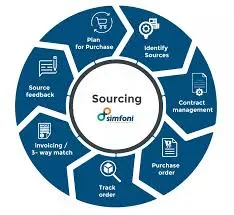Are you looking to enhance your procurement process and streamline business operations? Historical drawing libraries might hold the key to optimizing your procurement strategy.
Procurement involves sourcing goods and services from external suppliers to support daily operations. Drawing libraries store valuable data and documents in this process. Offering insights that can save time and analyze costs. But how can you leverage these libraries effectively to improve procurement efficiency?
Let’s explore some practical tips for maximizing the benefits of historical drawing libraries in your procurement practices.
Streamline Vendor Selection
You can use information stored in historical drawing libraries to identify vendors you have previously worked with on a project. If the previous results were satisfactory and you have a similar project to complete, you can contact that vendor again. This information on past performance data can help you save time on vendor selection and allow you to work with reliable, high-quality vendors you trust.
Reference Historical Pricing Data
Historical drawing libraries can hold information about every aspect of a project, including design, parts, manufacturing processes, and associated costs. You can reference historical project costs to develop accurate estimates for current procurement needs.
This can help you provide realistic financial projections and identify cost patterns and trends. It can potentially prevent budget overruns.
Organize Your Information
The procurement process can involve managing multiple suppliers and technical drawings. Using a drawing library to manage all the information about each supplier can help maintain an organized operation. Suppliers can also submit invoices, documents, and contracts electronically. It can be added to the library and tagged using keywords. This can reduce delays in finding invoices and drawings when needed, enhancing procurement efficiency.
Mitigate Risk
You can use drawing libraries to mitigate risk by examining project documentation and identifying any potential risks associated with a project. These risks can be related to various areas of procurement, including materials, vendors, or business processes. Technical drawings stored in your library can provide detailed information for following precise material specifications, avoiding vendor misunderstandings, and meeting quality standards.
By learning from past challenges and adjusting necessary processes to reduce risks, you can address potential issues before they escalate.
Accelerate Project Timelines
Use drawing libraries to accelerate project timelines by storing your information in one central location. This saves time by keeping all company data organized and easy to access. It also allows you to utilize historical data to identify bottlenecks in your manufacturing processes.
Being aware of these challenges enables you to take proactive measures to expedite the procurement and project timelines.
Provide High-quality Products
Drawing libraries can store information about the past quality of particular projects. This can help you create quality benchmarks and modify aspects of your workflow to increase the quality of your products. It can also allow you to keep track of the quality of materials and services provided by different vendors.
Procurement managers can use this information to ensure reliable materials and suppliers are engaged in current projects.
Optimize Procurement Using a Historical Drawing Library
A historical drawing library can store beneficial information, such as historical drawings, project costs, and project data. It provides a central location for automated workflows, document storage, and manufacturing details.
By providing historical insights that can influence decision-making, historical drawing libraries can reduce risks and improve procurement efficiency. To optimize procurement, organize information, and improve business efficiency, consider utilizing historical drawing libraries in your business.

